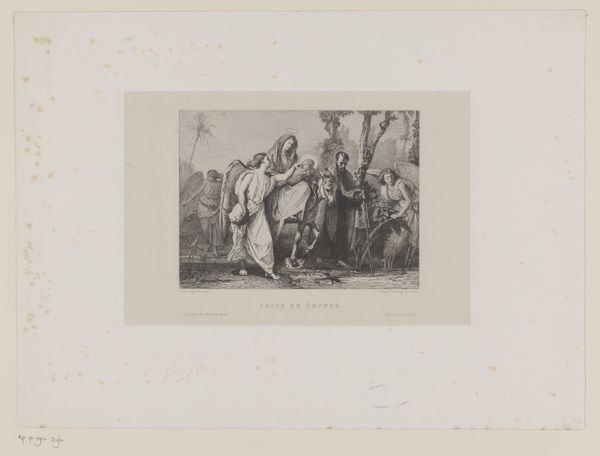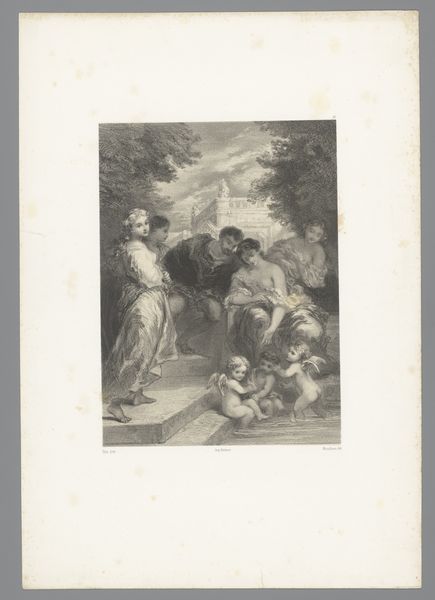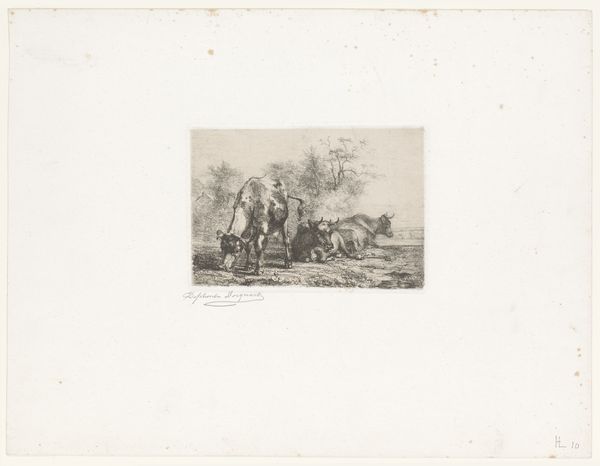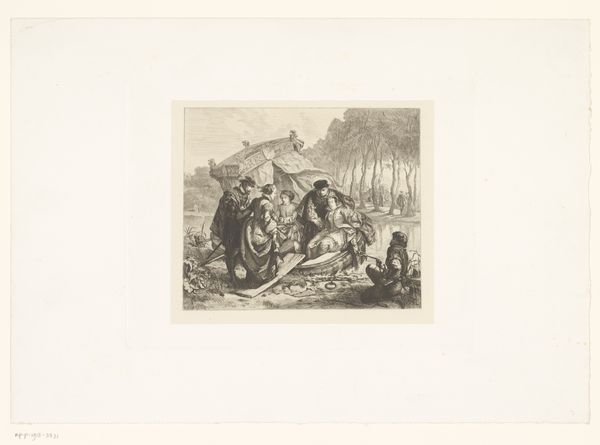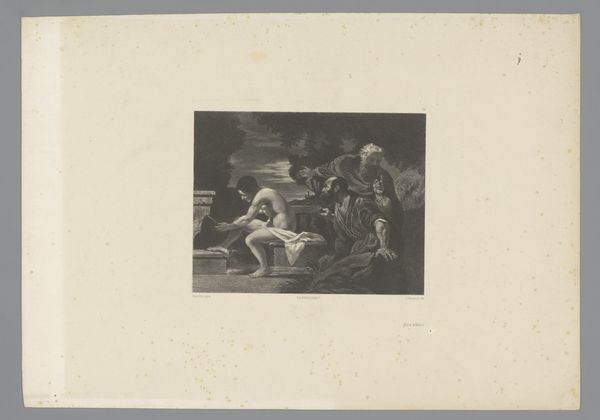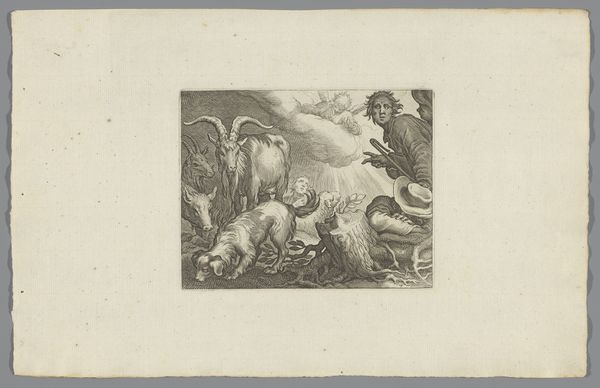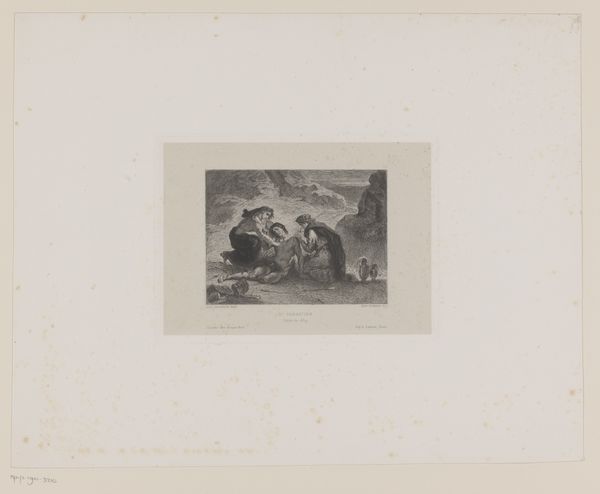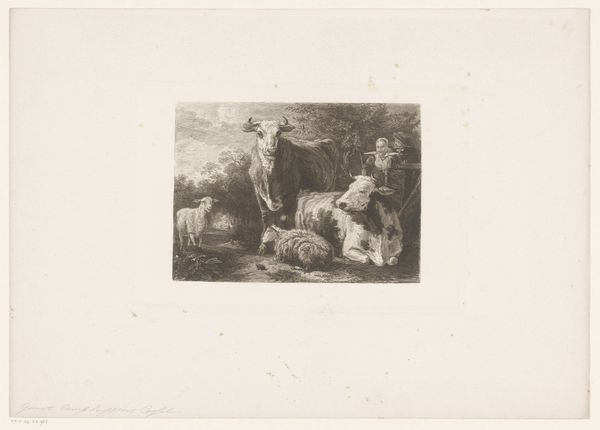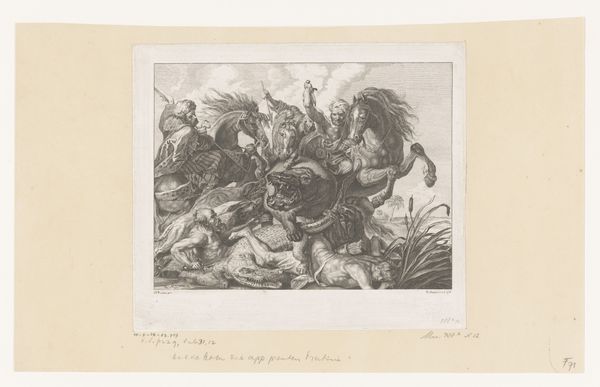
print, engraving
#
narrative-art
# print
#
figuration
#
romanticism
#
history-painting
#
engraving
Dimensions: height 312 mm, width 450 mm
Copyright: Rijks Museum: Open Domain
Curator: The churning, shadowy depths—it's instantly unsettling, wouldn't you agree? Editor: It certainly evokes a sense of turmoil and unease. This is a print by Célestin Nanteuil, entitled "Dante and Virgil in a Boat on the Styx", dating from sometime between 1846 and 1853. The engraving depicts a scene from Dante Alighieri's *Inferno*. Curator: Yes, look at Dante raising his hand as if in terror, his expression a mask of horror, and Virgil beside him seems to try to offer protection. The figures writhing in the water... their desperate expressions, it pulls you right into Dante's vision of hell. All these souls fight each other, climb on top of each other, each one lost in trying to get some air. A truly grim and emotional interpretation. Editor: What strikes me most is the symbolism imbued in this Styx scene itself. Water often signifies the unconscious, doesn't it? This turbulent river becomes a powerful representation of the dark and chaotic aspects of the human psyche, the hell each of us carries within. Curator: Absolutely. And in the 19th century, visual imagery and references taken from Dante’s *Inferno* resonated widely across Europe reflecting, through Romanticism, the cultural angst in light of rapidly shifting socio-political forces. Remember, the revolutions and social upheaval of the time fed directly into a fascination with darkness and the irrational, offering a powerful outlet for anxieties. Editor: It's intriguing how Nanteuil uses this particular scene to explore those darker themes. The Styx becomes a stage for a kind of primal, chaotic struggle, a visual echo of the individual's inner demons projected onto the wider social canvas. Curator: Precisely. You see the individual tormented psyche is laid bare—rendered into this bleak vision of society that allows for reflection on issues that impact all aspects of one's life and identity. Editor: An emotional tableau indeed. One cannot leave here without contemplating how powerful archetypes linger and are reimagined. Curator: It does leave one considering how hell isn’t necessarily a place, but an embodiment of social tensions made intensely visible, rendered in strokes of 19th-century artistic temperament.
Comments
No comments
Be the first to comment and join the conversation on the ultimate creative platform.

